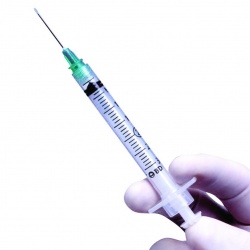POCT
This market will boom
The turnover in POCT diagnostics will continue to increase substantially according to participants in an ‘In Vitro Diagnostic Products’ meeting held in Toronto, Canada last October. Sponsored by the German Institute for Standardisation, the event included participation by the DIN Standards Committee Medicine (NAMed; NA 063) and the Working Committee on Point of Care Testing (POCT) (NA 063-03-11 AA).


In 2013 in the USA, turnover for products used to diagnose glucose levels, infections, heart disease and cancers, to name the most important conditions, was around US$25.2 billion. The forecast for 2018 is estimated at US$27.5 billion, an increase of around 9.3%.
Robert L Michel (Editor-in-Chief of The Dark Report) spoke of the particularly poignant diabetes occurrence in the US. 29.1 million Americans are diabetics, i.e. roughly 9.3% of the population. 21 million people were found to have diabetes following a specific diagnosis. 8.1 million people had no diagnosis. 75 million people are estimated to have pre-diabetic symptoms already.
The number of POCT tests and their applications is growing exponentially. Many experts in Toronto particularly saw technological progress leading to distinct changes. Classic areas of application, such as chemistry, toxicology, haematCology and microbiology, are using more and specific test proceduoeres for Point-of-Care. For example, the latest trends include additional modules for smartphones, such as those used for glucose and thyroid stimulating hormone (TSH) diagnosis. The number of Point-of-Care DNA tests being used, some highly complex, is also increasing. Another interesting trend revolves around ‘smart’ nappies with an integrated, specific urine test for babies and other patients.
Based on examples from Australia and Canada (more specifically from the Ontario region) diagnostic networks to treat HIV, and also cardiac disease, were introduced at the event. This emphasised the clear advantage of comprehensive POCT diagnostics, particularly regarding their analytical quality.
Ana Stankovic, Vice President of Becton Dickinson (BD) opened the event with a detailed overview of POC diagnostics workflow, emphasising the issue of potential error sources and relevance of timing for these tests.
In conclusion, the importance and usability of POC tests can no longer be questioned. Frequently, they are on a par with tests used in conventional laboratory diagnostics, whilst clearly easier to use – and faster. Provided the critical points, such as error sources, are given enough consideration, this form of testing will continue to boom and grow.
27.04.2015











